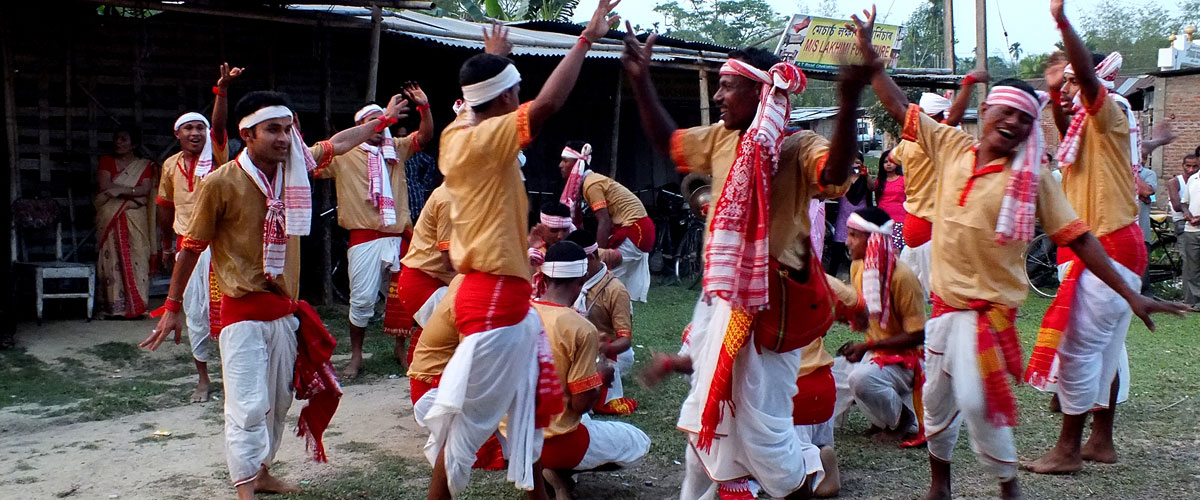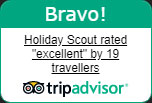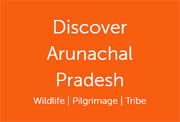Wild Life Assam Nagaland Tour
Tucked away in the far north-east of India, wedged between the borders of Bhutan, Burma and Tibet, Arunachal Pradesh is India’s newest and least-known state. Before the region was elevated to statehood in 1986, Arunachal Pradesh, along with Assam, Nagaland and 4 other states was known as the North-East Frontier Agency (NEFA). Except for occasional forays by administrators and anthropologists during the time of the British, nothing much was known about this area for most of the 20th century. The isolation of the North East Frontier Agency was legally safeguarded by India's own government; before laws permitting limited tourism were passed in 1995, even Indian citizens were not allowed to visit.
The North East Frontier Agency lands never belonged to ancient India. They were, and still are, peopled by Mongoloid and Mon-Khmer austere stock, far removed from Aryan-Dravidian blood of the mainstream. People here are animists (except the area of Tawang where they accepted Buddhism); in the Highlands, wild Burmese tribes enthusiastically practiced indiscriminate headhunting until as late as the fifties. To the north, Mongoloid tribals, bare-bodied in breech-clouts, are today still encountering “civilization".
Nagaland is almost entirely inhabited by 16 groups of Tibeto-Burmese tribes. Among them are Angamis, Aos, Konyaks, Kukis, Lothas, Semas and Wanchus.
The Nagas, who were once head hunters, have been known for their fierceness and the regular raids they made on Assam and Burma. The warring tribes believed that since the enemy’s animated soul, waha, was to be found at the nape of the neck, it could only be set free once beheaded. However, since the spritual soul, mio, resided in the head and brought good fortune, enemy heads (and those of dead comrades) were prized as they could add to a community’s own store of dead ancestors.
The hilltop villages are protected by stone walls. The morung, a meeting house, acts as a boy’s dormitory, and is used for storing weapons and once displayed the prizes of war i.e. the enemy heads. The huge sacred drum, which stands by each morung is hallowed out tree trunk carved to resemble a buffalo head.
The North East Frontier Agency lands never belonged to ancient India. They were, and still are, peopled by Mongoloid and Mon-Khmer austere stock, far removed from Aryan-Dravidian blood of the mainstream. People here are animists (except the area of Tawang where they accepted Buddhism); in the Highlands, wild Burmese tribes enthusiastically practiced indiscriminate headhunting until as late as the fifties. To the north, Mongoloid tribals, bare-bodied in breech-clouts, are today still encountering “civilization".
Nagaland is almost entirely inhabited by 16 groups of Tibeto-Burmese tribes. Among them are Angamis, Aos, Konyaks, Kukis, Lothas, Semas and Wanchus.
The Nagas, who were once head hunters, have been known for their fierceness and the regular raids they made on Assam and Burma. The warring tribes believed that since the enemy’s animated soul, waha, was to be found at the nape of the neck, it could only be set free once beheaded. However, since the spritual soul, mio, resided in the head and brought good fortune, enemy heads (and those of dead comrades) were prized as they could add to a community’s own store of dead ancestors.
The hilltop villages are protected by stone walls. The morung, a meeting house, acts as a boy’s dormitory, and is used for storing weapons and once displayed the prizes of war i.e. the enemy heads. The huge sacred drum, which stands by each morung is hallowed out tree trunk carved to resemble a buffalo head.
Package Itinerary
DAY 1 : Arrive Guwahati - ECO Camp (By surface approx. 260Kms/6 Hrs)
You will be welcomed by our accompanying local guide at Guwahati airport and visit Kamkaya temple and Shulkuch village famous for silk drive back to eco camp Namari. On arrival, check-in to the Namari eco camp.
DAY 2 : Eco Camp to Ziro(By surface approx. 36Kms/07-08Hrs)
Enroute visit Buddhist monastery and measum local market. Later drive to Ziro. On arrival, check-in to the hotel. One of the most beautiful hill stations of Arunachal Pradesh located at about 1500 meters above mean sea level in the midst of the pine clad mountains. Ziro is the headquarter of Lower Subansiri District inhabited by more than have 50,000 friendly Apatani’s people. The land of Apatani’s is a valley, uneven and dotted with a number of hillocks beneath the lust paddy field.
DAY 3 : Overnight in the Hotel Blue Pine/ Zirovelly resort
Early morning drive to Raga which is 60km 2 hrs drive visit Festival and back to Ziro. There is no accommodation in Raga Village. They have only government guest house. Difficulties can arise to get accommodation if client wants to stay. Local houses can be arranged or tented.
VISIT BORI BOOTH FESTIVAL AT RAGA VILLAGE Dated of Bori Booth Festival from 3/2/2015 to 6/2/2015 every Year they celebrated.
VISIT BORI BOOTH FESTIVAL AT RAGA VILLAGE Dated of Bori Booth Festival from 3/2/2015 to 6/2/2015 every Year they celebrated.
DAY 6 : Ziro
Using Ziro as a base, the entire 02 days are spent visiting the Hong and other Apatani Villages. Everywhere we go we are warmly welcomed. As E.T. Dalton noted in 1845, “The men do not rejoice in much drapery, they wear a girdle of cane work painted red which hangs behind in long bushy tail.” Just as the tail is the distinctive part of the male dress, so is the nose plug peculiar to the Apatani women. It is the ambition of each woman to wear the largest possible nose plugs, which are made of wood. Both sexes extensively tattoo their faces. Each sect has distinctive features. Their hats, clothes, ornaments, language and even physical features are totally different.
DAY 7 : Ziro – Doporijo
Departing early in the morning, we descend from the Ziro plateau and drive along the Kamla River valley through dense jungle country, passing picturesque villages of Nishis and the Hill Miris tribes. We’ll visit MuriMugli, a Hill Miris tribe, and if road conditions are good we will continue another eight miles on a mountain dirt road to Noori, a small traditional village of the same people. The Ghansi sect of the Miris that we encounter here are of short stature, scantily dressed with a sleeveless jacket and loincloths. They will usually carry woven cane knapsacks and a dao (broad sword) along with bow and arrows. The Panibotias, another sect of the Miris that we will meet, are just the opposite: tall, well-built people. Continue driving to Daporijo on the banks of the Subansiri river. Daporijo is the junction of three important tribes; Hill Miris, Tagins and Adi-Gallongs.
DAY 8 : Doporijo Along
Early morning visit Lida village of Adi-Gallong tribes. A short twelve-mile drive brings us to Tajipara, another Adi-Gallong tribal village. Adis are very accomplished weavers of cane goods. They make baskets, hats, breastplates, shield, but the excellence of their cane work shines supreme in the famous cane suspension bridges of Arunachal Pradesh. “Marvels of untutored engineering skills,” was how a 19th-century British explorer described the bridges. The Adis also excel at weaving intricate patterns for their clothing, and we may see examples of their pottery today.
DAY 9 : Monku village
Drive to Lower and Upper Bari village on the way cross the river Yamgo. From here hike for one hour to Mobuk village which sits pretty on a saddle. Also visit Monku village. We will also organize cultural evening in the village here.
DAY 9 : Along – Pasighat
We drive back towards Along before heading east to reach the Brahmaputra River Valley. We continue to drive on a military road downriver to Pasighat. Pasighat is a fairly big town on the banks of the Brahmaputra. Here the mighty river exits the mountains to empty onto the Assam plains. From being a few hundred feet wide, it suddenly grows to six miles across. In the evening visit the local market here.
DAY 10 : Pasighat – Dibrugarh
Morning drive 2 Drive to the ferry point and board our ferry for about 2 hours as we cross the mighty Brahmaputra. As there are no bridges close by on Brahmaputra, the ferry becomes the life line of trade between northern and southern banks of the river. Check in hotel. In the afternoon visit Local Market
DAY 11 : Mon
Drive to Mon for 7 hours. After going through checking formalities at the border of Nagaland, we enter the state. Visit first village at Phuktong village. It has two great Morungs (men’s dormitories). Also visit Angh’s (chief’s) reside.
Overnight in the HelsaResort or Helsa Cottage
Overnight in the HelsaResort or Helsa Cottage
DAY 12 : After breakfast visit Longwa Village
After breakfast visit Longwa Village, bordering India and Burma, situated about 50 km from the district headquarters of Mon. Longwais, one of the biggest villages in the district, some portions of this village lie in India and some in Myanmar. However, it is controlled by a chief known as Angh. Half of the house of the chief falls in India and the other half in Myanmar. The lucky villagers enjoy two citizenships, one of India and the other of Burma. It is the place where coal mine was discovered in 1907. A visit to the village will acquaint you with the culture of the tribe. They are skilled in making exquisite handicrafts. Afternoon visit Mon Village, here also you will find tattooed Konyaks. Overnight in Mon.
DAY 13 : Mon To Jorhat over/ night DonyAgam Bamboo Guest House
Enroute visit SibsagerSivadol / KarangerGhar / Rang Ghar and drive to Jorhat Over/ night hotel New park.
DAY 14 : After breakfast drive to Majuli Island,
The world’s largest River Island is famous for its twenty-two 15th Century "satras". These are Hindu Vaishnev (followers of Lord Vishnu) monasteries functioning as centers of Assamese arts. The worship of Lord Vishnu is through dance, music and poetry. The satras take in young boys and groom them. The daily routine includes working in the fields, tending cattle, prayer, discussion and study. The satras have also nurtured certain art and craft traditions, which can now be found only here. In NatunSamugrisatra for instance, one can still find the craft of mask-making. Kamlabarisatra still makes the finest boats.
On arrival in Majuli, check in to the lodge for overnight stay.
We will also explore the villages of Miri tribes who live on this island.
Overnight in the Denny’s Lodge /DonyAgom Bamboo house
On arrival in Majuli, check in to the lodge for overnight stay.
We will also explore the villages of Miri tribes who live on this island.
Overnight in the Denny’s Lodge /DonyAgom Bamboo house
DAY 15 : Majuli to Kaziranga
Majuli to Kaziranga 160km 3 hrs drive over/ night Hotel
DAY 16 : Elephant Ride and Jeep safari Inside national Park
Elephant Ride and Jeep safari Inside national Park
Inclusions and Exclusions
Prices Include:
- Accommodation on twin sharing basis in double occupancy (single occupancy attracts a 15% supplement)
- All Meals (Breakfast, Lunch, Tea and Dinner)
- Drinking water
- Transfers to and from the airport
- Transportation by SUV (Innova or Xylo)
- Inner Line Permit/Protected Area Permit (for Arunachal Pradesh only)
- Rafting/Camel/Elephant Safari charges
- Porters and mules during trek
- Entry fee to all parks/monuments/folk dances
- English-speaking tour guide
Prices Do Not Include:
- Any kind of personal expenses or optional tours or extra meals ordered
- Anything not specifically mentioned under the head "Prices include"
- Tips, insurance, laundry, phone calls, medication, visa fees
- Any kind of drinks (alcoholic, mineral, aerated)
- Connecting flights, trains or other conveyance
- Cost incidental to any change in the itinerary/stay on account of flight cancellation due to bad weather, ill health, roadblocks and/or any factors beyond control.
Terms & Conditions:
- Prices valid from 1st October 2016 to 31st March 2018.
- Prices valid for minimum 2 and maximum 4 pax traveling together in one vehicle.
- 50% non-refundable and non-transferrable advance payment to be deposited at the time of booking confirmation with balance due in cash on arrival.
- November to March Pangong Lake Journey will be done in one-day excursion.
- In April and October heaters will be provided in accommodation and vehicle free of charge.
- Our itineraries are conceived for adult travelers above the age of 15. Due to the remote geographical location of our tours, none is suitable for pregnant guests.
Enquire Now!
About the Guide
"I'm a woman entrepreneur from Austria and run a resort in Goa, India. I have rarely followed
the crowd, have always lived curiously and am unafraid to travel alone. But when the time came
for me to explore India, I wanted someone else to put together a fascinating itinerary and look
after the logistics for me so that I could totally let my hair down and have fun.
It was a huge stroke of good fortune that I found out about Sange Tsering - The Holiday Scout. Highly knowledgeable about the natural, historical and cultural treasures of Northeast India, well organized and committed to customer satisfaction in his approach, Sange is more than a qualified travel guide.
Given his contagious enthusiasm for discovery, Sange encouraged me to try everything and what started out as a tour quickly became a glorious pursuit of new life experiences which we found and swallowed whole for eleven straight days! Northeast India is a truly mesmerizing region, and I will surely return to travel with The Holiday Scout - the guide makes all the difference."
Erika | Austria | Solo Traveller
It was a huge stroke of good fortune that I found out about Sange Tsering - The Holiday Scout. Highly knowledgeable about the natural, historical and cultural treasures of Northeast India, well organized and committed to customer satisfaction in his approach, Sange is more than a qualified travel guide.
Given his contagious enthusiasm for discovery, Sange encouraged me to try everything and what started out as a tour quickly became a glorious pursuit of new life experiences which we found and swallowed whole for eleven straight days! Northeast India is a truly mesmerizing region, and I will surely return to travel with The Holiday Scout - the guide makes all the difference."
Erika | Austria | Solo Traveller
How to Book this Package?
To secure a booking for your tour, we ask that you pay a 50% deposit in advance with the balance due in cash on arrival.
For deposit within India, please use IFSC/NEFT - see bank details given on this page.
For deposit outside India, please use SWIFT remittance - see bank details given on this page.
Please note that should you decide to cancel your booking for whatever reason, your deposit will not be refunded or made transferable. The same holds true in case of no-show.
For deposit within India, please use IFSC/NEFT - see bank details given on this page.
For deposit outside India, please use SWIFT remittance - see bank details given on this page.
Please note that should you decide to cancel your booking for whatever reason, your deposit will not be refunded or made transferable. The same holds true in case of no-show.
Bank account details
| Account Holder: | M/S HOLIDAY SCOUT |
| Account Number: | 34892756900 |
| Bank: | State Bank of India |
| Branch: | Bomdila |
| IFSC Code: | SBIN0001394 |
| SWIFT Code: | SBININBB159 |
| Purpose: | Tour Advance |
| Remarks: | Please apply the funds to account 34892756900 which is maintained at your Bomdila Branch in Arunachal Pradesh |
| City: | Bomdila |
| District: | West Kameng |
| State: | Arunachal Pradesh |
| Address: |
Near Govt Higher Secondary School, Bomdila, West Kameng District, Arunachal Pradesh - 790001 |











